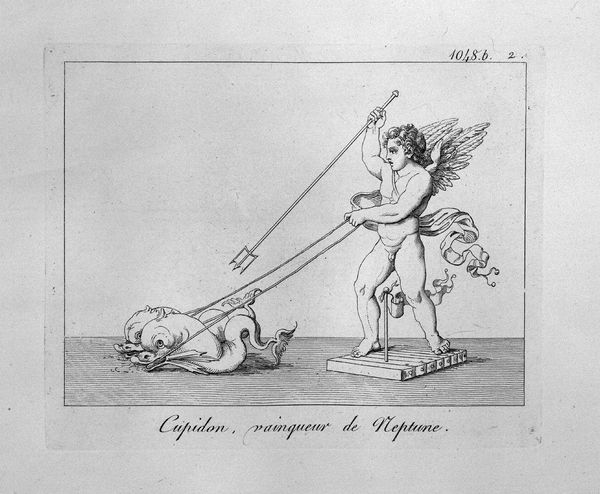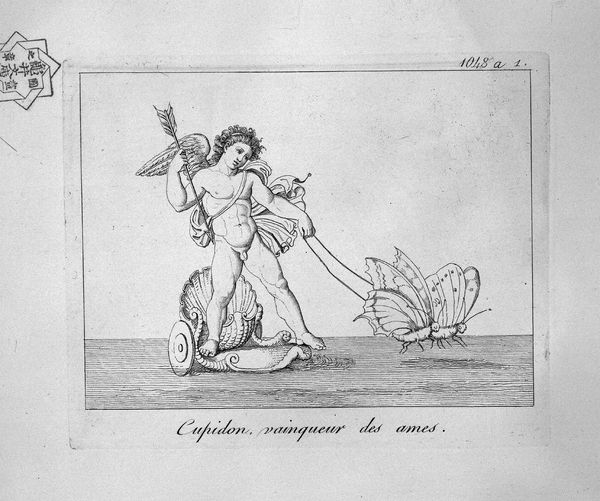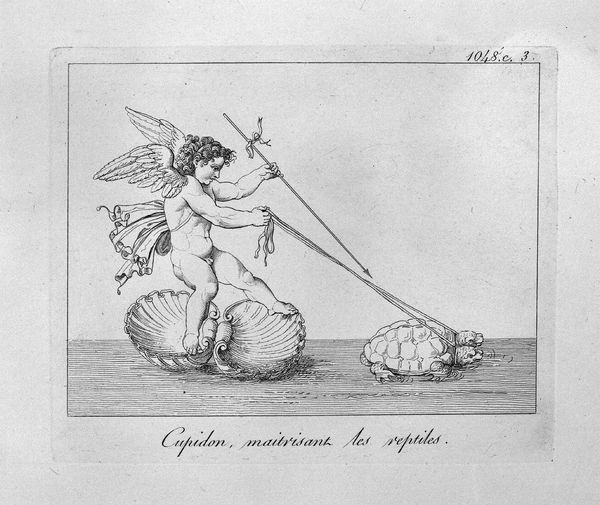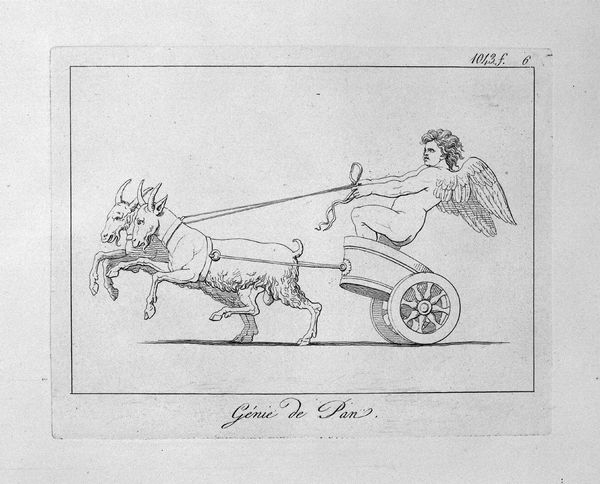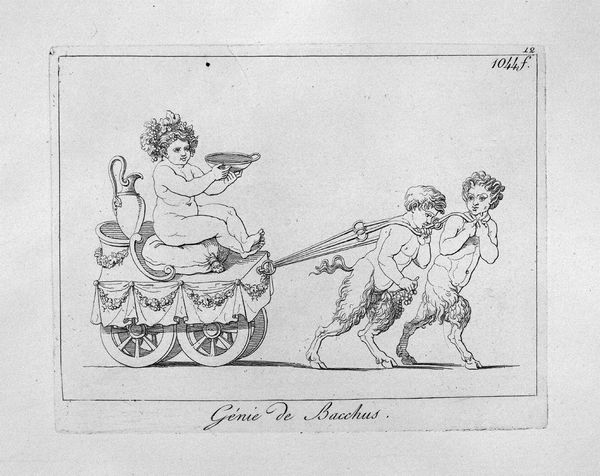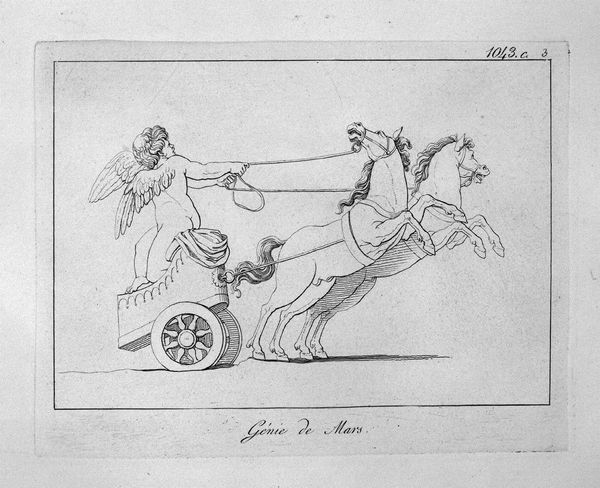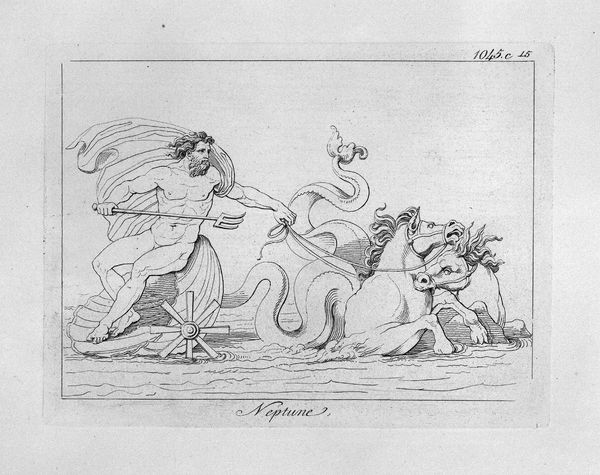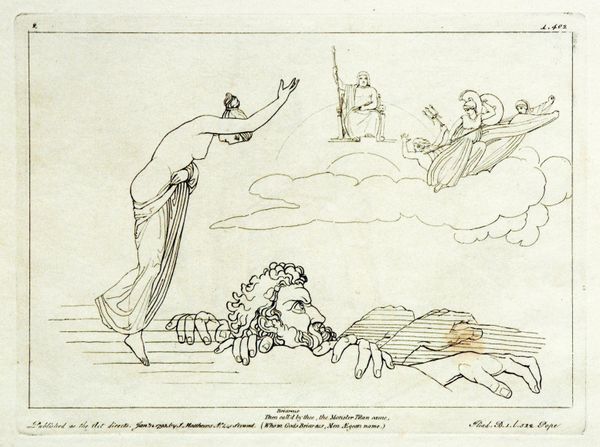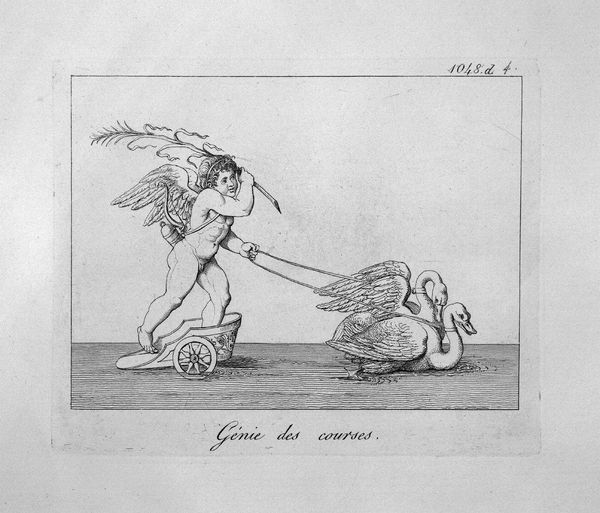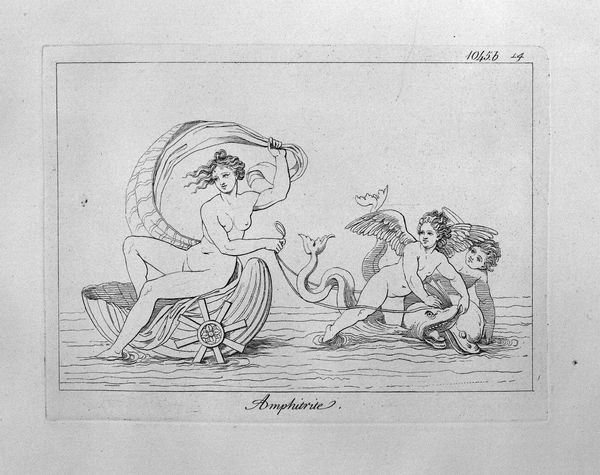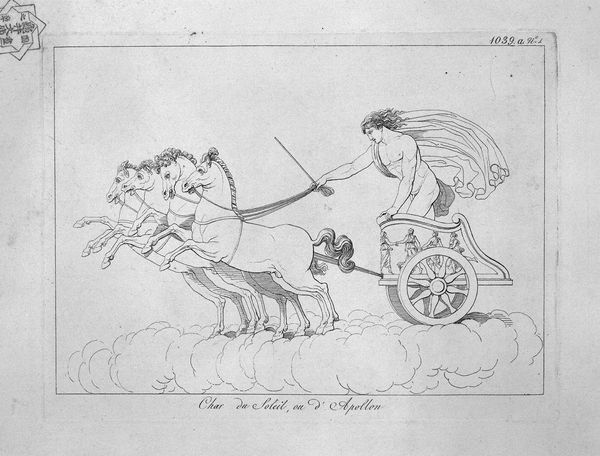
drawing, print, engraving
#
drawing
#
allegory
#
baroque
# print
#
figuration
#
roman-mythology
#
mythology
#
engraving
Copyright: Public domain
Curator: Today we’re examining “Cupid and Snails,” an engraving by Giovanni Battista Piranesi. What strikes you about this image? Editor: Well, immediately the stark contrast between the robust figure of Cupid and the snails. It's whimsical, almost absurd. Curator: Precisely! Piranesi, known for his detailed etchings of Roman architecture, takes a detour here. What is especially fascinating is Piranesi’s skill in translating baroque sensibilities into reproducible prints for a broader market. Consider how the meticulous details – the musculature of Cupid, the delicate texture of the snail shells, all achieved through etching – are not just artistic flourishes but evidence of Piranesi's craftsmanship intended for circulation. Editor: I'm drawn to the composition itself. The tension created by the lines of the reins, pulling Cupid, perched precariously on his little wheeled platform, towards these snails is both comical and strangely compelling. Curator: Absolutely. We can consider the context too. The engraving comes out of an era grappling with themes of love, power, and the natural world. These readily available prints encouraged discussion and provided the source of new concepts of mythology. Editor: Yes, the iconography is interesting. Snails, symbols of slowness and patience. And here they are being 'driven' by Cupid. Curator: The message is indeed layered. Could be an allegory for the patient pursuit of love. Or perhaps a comment on the burden love can become. What about the implications of labor required? Piranesi likely hired other engravers in his shop. The artistic impact belies the material concerns of the making of art for the market. Editor: Or a reflection on the often slow and sticky nature of affairs of the heart! Ultimately, it is a testament to how a single image can spark so many potential ideas. Curator: Yes, and considering its journey to a wider audience, how Piranesi merges commerce and classical allegories really reframes how we appreciate even playful prints such as this.
Comments
No comments
Be the first to comment and join the conversation on the ultimate creative platform.
